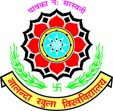Bihari languages are a group of the Indo-Aryan languages. The Bihari languages are mainly spoken in the Indian states of Bihar, Jharkhand, Uttar Pradesh, and West Bengal, and also in Nepal. The most widely spoken languages of the Bihari group are Bhojpuri, Magahi and Maithili.

Bihar is a state in Eastern India. It is the third largest state by population, the 12th largest by area, and the 15th largest by GDP in 2021. Bihar borders Uttar Pradesh to its west, Nepal to the north, the northern part of West Bengal to the east, and Jharkhand to the south. Bihar is split by the river Ganges, which flows from west to east. On 15 November 2000, southern Bihar was ceded to form the new state of Jharkhand. Only 11.27% of the population of Bihar lives in urban areas as per a 2020 report. Additionally, almost 58% of Biharis are below the age of 25, giving Bihar the highest proportion of young people of any Indian state. The official language is Hindi, which shares official status alongside that of Urdu. The main native languages are Maithili, Magahi and Bhojpuri. But there are several other languages being spoken at smaller levels.

Bhojpuri is an Indo-Aryan language native to the Bhojpur-Purvanchal region of India and the Terai region of Nepal and it is chiefly spoken in eastern Uttar Pradesh, western Bihar, and northwestern Jharkhand in India, as well as western Madhesh, eastern Lumbini, southeastern Gandaki, and southwestern Bagmati in Nepal. Bhojpuri is also widely spoken by the diaspora of Indians descended from those who left as indentured laborers during the colonial era. It is an eastern Indo Aryan language and as of 2000 it is spoken by about 5% of India's population. Bhojpuri is a descendant of Magadhi Prakrit and is related to Maithili, Magahi, Bangla, Odia, Assamese, and other eastern Indo-Aryan languages.

Magahi, also known as Magadhi, is a Indo-Aryan language spoken in Bihar, Jharkhand and West Bengal states of eastern India, and in the Terai of Nepal. Magadhi Prakrit was the ancestor of Magahi, from which the latter's name derives.

The Hindi Belt, also known as the Hindi Heartland, is a linguistic region encompassing parts of northern, central, eastern, and western India where various Northern, Central, Eastern and Western Indo-Aryan languages are spoken, which in a broader sense is termed as Hindi languages, with Standard Hindi serving as the lingua franca of the region.
The Other Backward Class (OBC) is a collective term used by the Government of India to classify communities that are "educationally or socially backward". It is one of several official classifications of the population of India, along with general castes, Scheduled Castes and Scheduled Tribes. The OBCs were found to comprise 52% of the country's population by the Mandal Commission report of 1980 and were determined to be 41% in 2006 when the National Sample Survey Organisation took place. There is substantial debate over the exact number of OBCs in India; it is generally estimated to be sizable, but many believe that it is higher than the figures quoted by either the Mandal Commission or the National Sample Survey.

Bhagalpur district is one of the thirty-eight districts of Bihar state, India. Bhagalpur is the oldest district of Bihar. Bhagalpur city is the administrative headquarters of this district.

Lohar is considered to be a caste among. They form traditionally artisanal castes. Writers of the Raj period often used the term Lohar as a synonym for blacksmith, although there are other traditional smiting communities, such as the Ramgarhia and Sikligar, and numerous non-traditional communities, including the Kayastha, Rajput and Brahmin.

Bhojpur district is one of the 38 districts of the Indian state of Bihar. Arrah city is the administrative headquarters of this district. Bhojpur district came into existence in 1972. Earlier it was the part of Shahabad district. This district is named "Bhojpur" after great Parmara King Bhoja as most early settlers were Rajput rulers of Parmara dynasty then called as Ujjainiya.

Nalanda Open University (NOU) is a university at Patna in Bihar state, India. Nalanda Open University Degree/Diploma /Certificates are eligible for higher studies, public & private sector employment and service promotions. It is recognized by University Grants Commission (UGC). It is a member of Association of Indian Universities which is mainly concerned with the recognition of degrees/diplomas awarded by the Universities in India, which are recognized by the University Grants Commission, New Delhi, and abroad for the purpose of admission to higher degree courses in Indian Universities. It is an open university which means that it follows an open-door academic policy and is open to everyone for admission with minimum requirements.
At the 2011 Census, Bihar was the third most populous state of India with total population of 104,099,452, nearly 89% of it rural. It was also India's most densely populated state, with 1,106 persons per square kilometre. The sex ratio was 918 females per 1000 males. Almost 58% of Bihar's population was below 25 years age, which is the highest in India. At 11.3%, Bihar has the second-lowest urbanisation rate in India after Himachal Pradesh.
The demographics of Uttar Pradesh is a complex topic, which is undergoing dynamic change. Uttar Pradesh is India's most populous state, and the largest subdivision in the world. It has a population of about 199,812,341 as per the 2011 census. If it were a separate country, Uttar Pradesh would be the world's fifth most populous nation, next only to China, the rest of India, the United States of America and Indonesia. Uttar Pradesh has a population more than that of Pakistan. There is an average population density of 828 persons per km2 i.e. 2,146 per sq mi. The capital of Uttar Pradesh is Lucknow, and Prayagraj serves as the state’s judicial capital. Hindus and Muslims both consider the state as a holy place.
Hindi is one of the official languages in the Indian state of Bihar. Although Hindustani is the lingua-franca of the region, the majority of the people natively speak one of the Bihari languages.
Bajjika is an Indo-Aryan language variety spoken in parts of Bihar, India and in Nepal. It is closely related to Maithili.
Bihari culture refers to the culture of the Indian state of Bihar. Bihari culture includes Angika culture, Mithila culture, Bhojpuri Culture and the culture of Magadha.
Bihar has produced a number of poets and writers in its languages like Bhojpuri Maithili language, Magahi language, Angika and Bajjika including Bhikhari Thakur, Heera Dom, Viveki Rai,Satishwar Sahay Verma, Pandey Kapil etc are writers of Bhojpuri, Vidyapati in Maithili. Besides its regional languages, Bihar has also produced writers in English such as Raj Kamal Jha, Amitava Kumar, Tabish Khair, Gunjesh Bond, Abhay K, Kumar Vikram, Siddhartha Chowdhury; and Hindi including Raja Radhika Raman Prasad Sinha, Kumar vansi, Acharya Ramlochan Saran, Acharya Shivpujan Sahay, Divakar Prasad Vidyarthy, Ramdhari Singh 'Dinkar', Ram Briksh Benipuri, Phanishwar Nath 'Renu', Gopal Singh "Nepali", Ramesh Chandra Jha and Baba Nagarjun. Writer and Buddhist scholar Mahapandit Rahul Sankrityayan was born in Uttar Pradesh but spent his life in the land of Buddha, i.e., Bihar. Hrishikesh Sulabh is a short story writer, playwright and theatre critic. Arun Kamal and Aalok Dhanwa are poets.
Most of the languages of Bihar, the third most populous state of India, belong to the Bihari subgroup of the Indo-Aryan family. Chief among them are Bhojpuri, spoken in the west of the state, Maithili in the north, Magahi in center around capital Patna and in the south of the state. Maithili has official recognition under the Eighth Schedule to the Constitution of India. The official language of Bihar is Modern Standard Hindi, with Standard Urdu serving as a second official language in 15 districts.

Angika is an Eastern Indo-Aryan language spoken in some parts of the Indian states of Bihar and Jharkhand, as well as in parts of Nepal.
The Bhojpuri people, also known as Bhojpuriya-sawb are an Indo-Aryan ethnic group from the Indian subcontinent who speak the Bhojpuri-language and inhabit the Bhojpur-Purvanchal region. This area is now divided between the western part of the Indian state of Bihar, the eastern part of the Indian state of Uttar Pradesh, western Jharkhand, along with some neighbouring districts in the Madhya Pradesh and Madhesh and Lumbini of Nepal. A significant diaspora population of Bhojpuris can be found in Trinidad and Tobago, Guyana, Jamaica, Suriname, other parts of the Caribbean, Fiji, South Africa, Mauritius, United States, Canada, Netherlands, United Kingdom, Australia, and New Zealand.
Yadavs in Bihar refers to the people of Yadav community of the Indian state of Bihar. They are also known as Ahir, Gope, etc. The Yadavs form nearly 14.26 % of the state's population and are included in the Other Backward Class category in the Bihar state of India. Ahirs are among the land owning caste in the plains of Bihar.


















